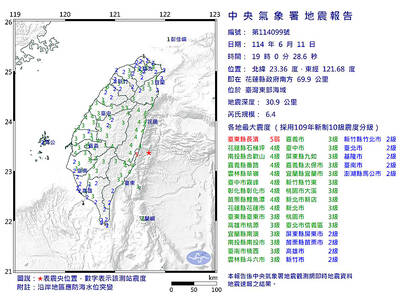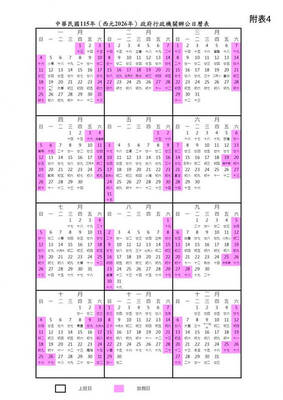The southwest and northeast coasts of the country are the most vulnerable to tsunamis in the event of a strong underwater earthquake occurring in the South China Sea, according to the results of a study released yesterday.
Regions that are considered at high risk include the shoreline between Hengchun (
The study was conducted by Wu Tso-ren (
Wu reported the results of his study during the South China Sea Tsunami Workshop 2007 held by the Academia Sinica's Institute of Earth Sciences.
Tsunamis are usually caused by undersea earthquakes measuring at least 7.2 in magnitude that have a focal depth no deeper than 30km.
If the South China Sea experiences an undersea earthquake with a magnitude similar to that of the Dec. 26, 2004, Indian Ocean earthquake near the Indonesian island of Sumatra, a tsunami 8m to 10m high is likely to hit Hengchun approximately one hour after the quake, and Lotung and Suao are likely to see a tsunami 6m to 8m high, Wu said.
Referring to a report by the US Geological Survey assessing the potential risk a tsunami source along the Pacific subduction zones, Wu noted that the Luzon trench has been identified as a high risk zone, while the Ryukyu trench and the North Sulawesi trench have been identified as medium risk zones.
The report says these subduction zones can rupture and generate large tsunamis that will have a significant impact on the countries in the South China region.

A magnitude 6.4 earthquake struck off the coast of Hualien County in eastern Taiwan at 7pm yesterday, the Central Weather Administration (CWA) said. The epicenter of the temblor was at sea, about 69.9km south of Hualien County Hall, at a depth of 30.9km, it said. There were no immediate reports of damage resulting from the quake. The earthquake’s intensity, which gauges the actual effect of a temblor, was highest in Taitung County’s Changbin Township (長濱), where it measured 5 on Taiwan’s seven-tier intensity scale. The quake also measured an intensity of 4 in Hualien, Nantou, Chiayi, Yunlin, Changhua and Miaoli counties, as well as

Taiwan is to have nine extended holidays next year, led by a nine-day Lunar New Year break, the Cabinet announced yesterday. The nine-day Lunar New Year holiday next year matches the length of this year’s holiday, which featured six extended holidays. The increase in extended holidays is due to the Act on the Implementation of Commemorative and Festival Holidays (紀念日及節日實施條例), which was passed early last month with support from the opposition Chinese Nationalist Party (KMT) and Taiwan People’s Party. Under the new act, the day before Lunar New Year’s Eve is also a national holiday, and Labor Day would no longer be limited

COMMITMENTS: The company had a relatively low renewable ratio at 56 percent and did not have any goal to achieve 100 percent renewable energy, the report said Pegatron Corp ranked the lowest among five major final assembly suppliers in progressing toward Apple Inc’s commitment to be 100 percent carbon neutral by 2030, a Greenpeace East Asia report said yesterday. While Apple has set the goal of using 100 percent renewable energy across its entire business, supply chain and product lifecycle by 2030, carbon emissions from electronics manufacturing are rising globally due to increased energy consumption, it said. Given that carbon emissions from its supply chain accounted for more than half of its total emissions last year, Greenpeace East Asia evaluated the green transition performance of Apple’s five largest final

Taiwan is to extend its visa-waiver program for Philippine passport holders for another year, starting on Aug. 1, Minister of Foreign Affairs Lin Chia-lung (林佳龍) said on Friday. Lin made the announcement during a reception in Taipei marking the 127th anniversary of Philippine independence and the 50th anniversary of the establishment of the Manila Economic and Cultural Office (MECO) in Taiwan, the Ministry of Foreign Affairs said. The decision reflected Taiwan’s commitment to deepening exchanges with the Philippines, the statement cited Lin as saying, adding that it was a key partner under the New Southbound Policy launched in 2016. Lin also expressed hope